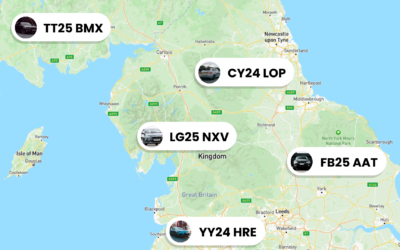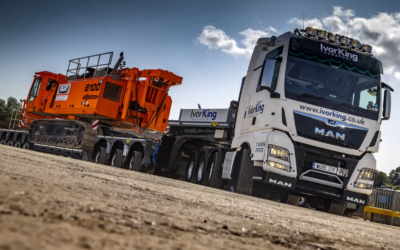Predictive Maintenance for Fleets: Cut Downtime Fast
Predictive maintenance is no longer a future concept — it’s a practical tool for fleet managers who want to reduce costs, improve uptime and keep vehicles on the road. This guide walks you through why predictive maintenance matters, how it differs from other strategies, the data and technology you’ll need, a step-by-step implementation roadmap, how to choose between building or buying, and how to measure success. Along the way you’ll find pragmatic tips for getting a pilot off the ground and scaling with confidence.
Why predictive maintenance matters for fleets
As a fleet manager you’re juggling utilisation targets, safety obligations and tight maintenance budgets. Predictive maintenance shifts your approach from reacting to failures to preventing them before they happen. That doesn’t just reduce unplanned downtime — it also lowers emergency repair costs, curbs overtime for technicians, and improves vehicle availability for scheduled work.
Think about the hidden costs: delayed deliveries, lost revenue during downtime, reputational damage from late customers and the administrative burden of managing breakdowns. With predictive maintenance, you get lead time on impending failures so you can schedule repairs during low utilisation windows, order parts in advance and reduce the likelihood of roadside recovery. That translates into better KPIs across the board: lower cost per mile, higher utilisation, longer mean time between failures and improved safety records.
For many fleets the switch to predictive maintenance is a multiplier: marginal reductions in downtime cascade into noticeable savings in labour, parts and operational disruption. It’s a strategic investment that delivers recurring returns rather than a one-off cost.
The cost of reactive maintenance
Reactive maintenance is expensive. Emergency repairs cost more for labour and parts, and vehicles out of service can force route reshuffling that increases fuel and labour costs. Worst-case scenarios include lost contracts and customer dissatisfaction. By contrast, predictive maintenance helps avoid the emergency cycle and smooths out your maintenance workload.
Expected benefits and KPI improvements
Key metrics you should expect to improve include: downtime reduction, lower repair cost per mile, increased vehicle availability and improved part-order accuracy. Track these KPIs before and after your pilot to quantify impact and build the business case.
Predictive vs. scheduled and condition-based maintenance
It helps to be clear about where predictive maintenance sits alongside scheduled and condition-based approaches. Each method has merit — the trick is choosing the right mix for your fleet’s duty cycles and risk tolerance. For many managers, a hybrid strategy combining scheduled checks with predictive alerts yields the best results.
Scheduled (time-/mile-based) maintenance
Scheduled maintenance is straightforward: services at fixed intervals. It’s predictable and easy to budget for, but it can lead to over-servicing or missed deterioration that occurs between intervals. Use scheduled checks for items with well-known life cycles, and combine them with predictive insights for components with variable failure patterns.
Condition-based maintenance
Condition-based maintenance relies on thresholds and sensor alerts — for example, oil pressure or coolant temperature. It’s more targeted than scheduled maintenance but still reactive: once a threshold is hit, you act. Predictive maintenance builds on this by forecasting issues before thresholds are breached.
What predictive maintenance adds
Predictive maintenance uses data trends and machine learning to predict failures with a useful lead time. Instead of waiting for an alert, you get early warnings that let you plan interventions. This improves parts logistics, reduces emergency labour and decreases the chance of secondary damage caused by delayed repairs.
Data and technology requirements
Successful predictive maintenance rests on reliable data. You’ll need a blend of telematics, vehicle diagnostics and maintenance history stitched together so analytics can spot patterns. The better your data quality, the more accurate your predictions — and that’s where many fleets see the biggest gains.
Data sources and sensors
Essential sources include telematics units, OBD-II / CAN-bus data, engine and transmission sensors, and any specialised sensors for vibration, temperature or fluid quality. Combine sensor feeds with workshop logs and parts inventory to give models the context they need to distinguish normal wear from emerging faults.
Integration and data quality
Integration is critical. Time-synchronised data, consistent labels and complete service records mean your models aren’t learning on noisy signals. If you’re missing historical failure data, start collecting it now — even simple, accurate time-series records markedly improve predictive maintenance outcomes.
Analytics, models, and tooling
Tooling ranges from rule-based alerts to advanced machine learning models that detect anomalies and predict time-to-failure. Real-time scoring is useful for high-risk components; batch predictions work for planning cyclical repairs. Visualisations and technician-friendly alerts help convert model output into action at the workshop.
Step-by-step implementation roadmap
Rollouts that succeed follow a phased approach: define, pilot, validate and scale. Keep the pilot scope tight, measure clear KPIs and involve technicians from day one so predictions translate into practical diagnostics and repairs. A disciplined rollout reduces risk and builds internal champions for wider adoption of predictive maintenance.
Plan and pilot
Select a small, representative set of vehicles for the pilot and set concrete objectives such as % downtime reduction or parts-order accuracy improvement. Confirm your data feeds, logging cadence and integration points before switch-on. Short pilots (8–12 weeks) typically reveal whether your data and models are fit for purpose.
Model development and validation
Train models on historical failures where possible and validate using holdout datasets. Track precision, recall and lead-time metrics so you know how often predictions are actionable. Tune thresholds to minimise false positives to avoid alert fatigue in the workshop.
Scale, ops, and change management
When scaling, codify processes: who receives alerts, how technicians triage predictions, and how parts are ordered. Update SLAs and train teams to interpret model outputs. Continuous feedback from technicians is essential to refine the system and improve the value of predictive maintenance across the fleet.
Ready to see predictive maintenance in action? Book a demo with Traknova to walk through a pilot setup, review sample dashboards and discuss how predictive models would work on your fleet. Book demo
Choosing the right solution: build vs. buy and vendor checklist
Deciding whether to build an in-house predictive maintenance capability or buy a vendor solution comes down to resources, time and strategic priorities. Building gives control but requires data science skills and ongoing maintenance. Buying accelerates time-to-value and typically includes domain expertise, dashboards and support.
Build vs. buy considerations
Ask yourself: do you have the data infrastructure and data science talent to build and maintain models? If you need rapid ROI and limited internal capability, a vendor solution is often the more pragmatic choice. If you require bespoke models tied to unique vehicle configurations, building may be justified.
Vendor evaluation checklist
When evaluating vendors consider: data access and ownership, model explainability, integration with your telematics and workshop systems, support for edge devices and offline scoring, and commercial terms. Look for vendors who can demonstrate clear maintenance workflows and technician-friendly alerts.
Integration and security requirements
Integration touches APIs, data exports and sometimes edge devices. Don’t overlook Security — ensure data encryption, role-based access and compliance with relevant standards. Also confirm the vendor’s approach to data ownership and portability so you retain control over your fleet’s data assets. If you’re also working on broader digital programmes, see our guide to Fleet Cybersecurity.
Measuring success and continuous improvement
Measurement turns predictive maintenance from a pilot novelty into a repeatable programme. Define KPIs up front, instrument dashboards for trending and set a regular review cadence to catch model drift and operational issues. Continuous improvement keeps predictions aligned with evolving duty cycles and vehicle types.
Key metrics and reporting cadence
Track: reduction in unplanned downtime, repair cost per mile, false positive rate, mean time to repair and parts-order accuracy. Review these weekly during your pilot and move to monthly executive reporting once scaled.
Maintaining model accuracy and lifecycle
Models degrade if operational patterns change. Implement drift detection, schedule retraining with recent labelled data, and keep a feedback loop where technicians confirm or dispute predictions. That feedback is gold for incremental model improvements.
Common pitfalls and practical tips
Watch for poor data quality, lack of technician engagement and alert fatigue. Start simple, tune thresholds conservatively and prioritise predictions that are actionable within your operational constraints. Integrate with existing maintenance workflows, not parallel processes, to ensure adoption.
Conclusion: Make predictive maintenance your reliability engine
Predictive maintenance offers fleet managers a pragmatic way to cut downtime, reduce cost and make maintenance more strategic. Start with a focused pilot, validate the KPIs that matter to your operation and scale with clear processes and technician involvement. Whether you build or buy, the right approach turns intermittent fixes into a reliable programme that supports business goals.
To explore how predictive maintenance can work on your fleet, book a demo with Traknova and we’ll walk through a tailored pilot plan and expected ROI.
Frequently asked questions
Q: How quickly can we see benefits from predictive maintenance?
A: Many fleets see measurable benefits within 3–6 months of a pilot, depending on data quality and the components targeted. Early wins often come from high-failure items where lead-time for repairs can be reliably predicted.
Q: Do we need specialised sensors to start?
A: Not always. You can begin with telematics and CAN-bus diagnostics; additional sensors (vibration, temperature) add value for specific failure modes. Start with the data you already collect and augment as you validate use-cases.
Q: Will predictive maintenance replace technicians?
A: No. It makes technicians more effective by prioritising work and reducing guesswork. Technicians remain essential for diagnostics, repair and for providing feedback that improves model accuracy.
We’d love your feedback — did this guide help you understand how predictive maintenance can cut downtime for your fleet? Please share this article with colleagues and on social media to help other fleet managers. What aspect of predictive maintenance would you like us to cover next — model selection, sensor strategy, or change management? Leave a comment or contact us.
Ready to see predictive maintenance live on your vehicles? Book demo or request a consultation with Traknova and we’ll design a pilot tailored to your fleet’s needs.










